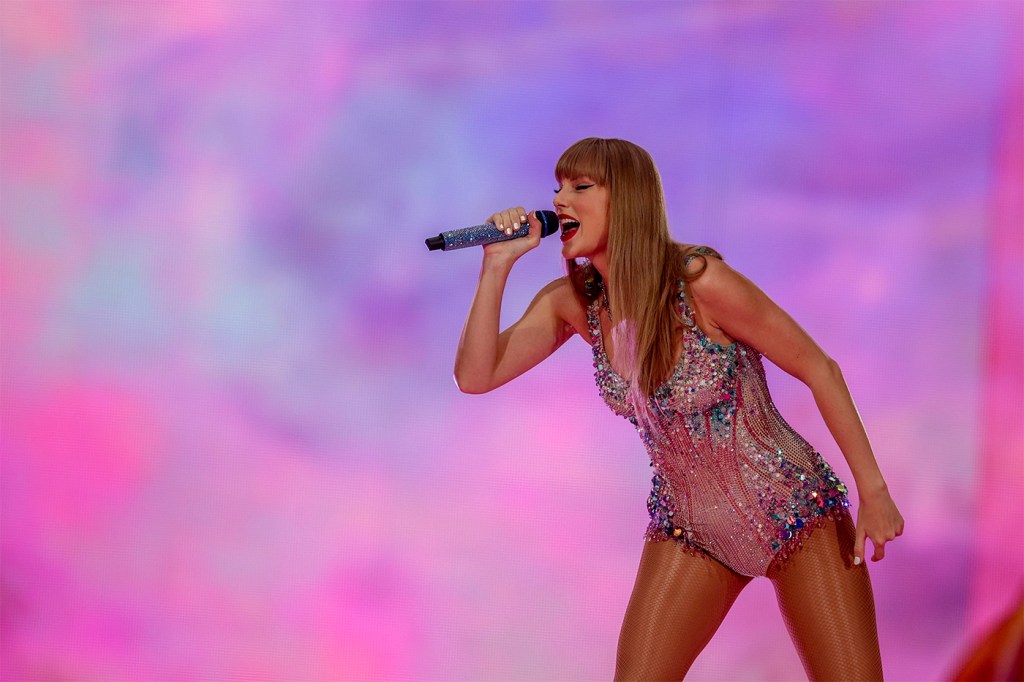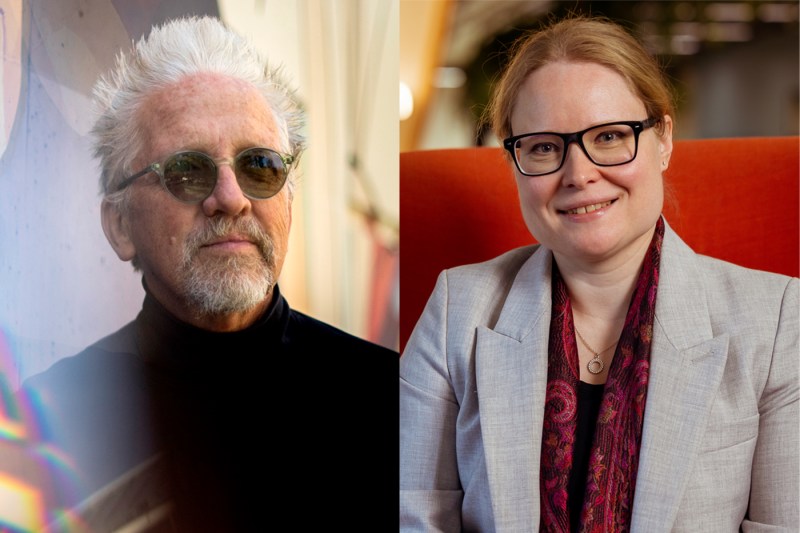Should the UK tax Taylor Swift’s Eras tour to save its grassroots venues?
A U.K. charity supporting small music venues wants a levy placed on major tours. But would a tax on tours solve the live music sector’s issues? A Northeastern expert is not so sure.

LONDON — Taylor Swift returned to the U.K. on June 7 to kick off three consecutive nights of the Eras tour at Edinburgh’s Murrayfield Stadium, playing to a crowd of almost 73,000 screaming fans each night.
Those kinds of attendance numbers were a long way from her first performance at age 14 at the Bluebird Cafe in Nashville, Tennessee, a venue that has a seating capacity of only 90.
The issue for the U.K. is that its equivalent Bluebird venues are struggling to keep the wolves at bay. Moles, a 220-capacity venue in Bath, a city in southwest England, shut its doors in December after almost 50 years, having played a hand in the careers of artists including Ed Sheeran, Oasis and Radiohead. Other night spots are in a fight for their survival.
The Music Venues Trust (MVT), a U.K. charity that acts to protect grassroots music venues, stated in its annual report that over the course of 2023, it registered the loss of 125 such venues.

At the same time, the construction of arena-sized venues is booming — Co-op Live recently opened in Manchester after a number of setbacks to become the U.K.’s biggest indoor arena, while mega venues are planned for such cities as Edinburgh and Dundee in Scotland, Cardiff in Wales, and Bristol and Sunderland in England.
MVT, backed financially by the likes of Coca-Cola and Ticketmaster, has a proposal to reverse the decline in grassroots establishments. The organization is lobbying the U.K. government for a compulsory £1 ($1.27) levy to be applied on tickets sold for live music events above 5,000-seating capacity.
Mark Davyd, MVT’s chief executive, says that without such financial support, the music industry is facing a “catastrophic failure of artist development.” France has already acted, he points out, with all major live music events required to pay 3.5% of each ticket sale into a fund to support grassroots artists and venues.
Swift is expected to play to 1.1 million people across her summer shows in the U.K., with other Eras concerts taking place in London, Liverpool and Cardiff between June and August. If MVT’s suggested levy was paid on each ticket, it would produce almost $1.4 million to support smaller British venues and their mission to propel The Next Big Thing to stardom.
But not everyone is convinced the levy concept would yield results. David Herlihy, a copyright lawyer and music industry teaching professor at Northeastern University, says the proposal harks back to a “bygone ecosystem” of live music concerts that was disrupted first by social media and then further by the coronavirus pandemic.
“Before social media, music was a congregating magnet. It was all tied to a physical space,” says Herlihy, who fronted the 1980s-era Boston-based indie rock band O Positive.
“Before the internet, before digital media, everybody from Hank Williams, to Elvis Presley, to The Beatles, to The Eagles, to Nirvana, to Taylor Swift, they all traveled the same path.
“They all wrote songs and rehearsed a lot. They got shows around town, they had enough of a following so that the place could make profit selling alcohol. The business model was alcohol and people in the room, and it worked really well for a long period of time. You had these critical, small places that were breeding grounds for all the little not-yets to become somebody.”
But social media has become a disruptor to that bottom-up model, he argues.
“Now you have TikTok, you have social media … and if enough people watch, then that gets pushed to the foreground and then a lot of people share them, and all of a sudden you have a big following,” he adds.
Herlihy says he “loves this idea of saving venues” from MVT but that it “seems like they are tilting at windmills,” with bigger issues at play, including whether people are still drawn to the idea of club shows in a post-COVID world.
“Are people going to go to the clubs when there is so much else to do?” he questions. “Then you also combine that with the cost of real estate. I think COVID dealt a real body blow to places that were already struggling in the social media era.”
He says any levy would ultimately likely end up being “passed on to the consumer,” meaning higher ticket prices for those attending mega tours like Swift’s or Elton John’s five-year $939 million-grossing Farewell Yellow Brick Road tour.
“At the end of the day, it is not going to be the promoters or the artists saying, ‘OK take my money,’” says Herlihy. “They are just going to tack that on and the consumer is going to pay more.”
Marianna Koli, director of social sciences at Northeastern in London, says there are economic theories to back up why music lovers gravitate toward bigger acts, in a move that leads to largescale arena tours coming to dominate the market.
Featured Posts
“Consumers tend to be keener to spend money on enjoying the work of ‘known’ artists because it involves less risk than supporting newer ones,” says the associate professor in economics.
“And secondly, there is enjoyment in being part of a larger collective. So when people make spending decisions, there is a tendency to favor artists that others know and like, and so there is a snowball effect toward a smaller number of artists.
“The latter point addresses why this Eras tour is so popular and why people are willing to spend so much to be a part of it. You’re not just consuming music, you’re living through and participating in a cultural phenomenon.”
And that phenomenon is being felt in the pockets of attendees, with Britain’s Swifties shelling out heavily in their quest to see their pop idol live. A report by Barclays on the impact of “Swiftonomics” estimates that spending in the U.K. economy will be boosted by almost £1 billion ($1.27 billion) as a result of the Eras tour.
Koli puts that figure into context. She says the economic effect of the 34-year-old pop star’s appearances is estimated to be more than double the £400 million ($509 million) the royal family will bring into the country over the course of the two-and-a-half months that she is in town. But it is likely to be £4 billion ($5.1 billion) shy of the added value amateur sport and exercise usually creates over the same period.
Barclays’ analysts calculate that the average Swiftie will spend £848 ($1,080) on their tour experience, once the costs of travel, accommodation, food, drink and tour merchandise are accounted for. Koli says it was not hard to see how that kind of spending and its subsequent economic reverberations come into play with a tour of this size.
“Between all the Eras tour venues and dates in the U.K., there are something like 1.2 million tickets available, with an average ticket price of £150-£200 ($190-250),” she says. “Large numbers multiplied by large numbers will quickly lead to very large numbers.”
With Britain only just emerging from a cost-of-living crisis that was fuelled by high inflation, for some, that kind of spending will lead to cutbacks and sacrifices in other parts of their lives, Koli speculates, with the tour experience possibly prioritized over something like a vacation.
When Swift steps on the Edinburgh stage, it will be the first time she has headlined a show in Scotland for nearly 10 years and will mark her first U.K. return in six. It is that rarity factor, Koli says, that can lead to fans deciding to throw caution to the wind when it comes to splashing out on an Eras show.
Koli says: “In order to motivate that spend, the tour has to be a fairly unique event and probably limited in availability — it might be difficult to keep up the consumer interest in ‘the Taylor Swift experience’ if similar events happened too often.”











